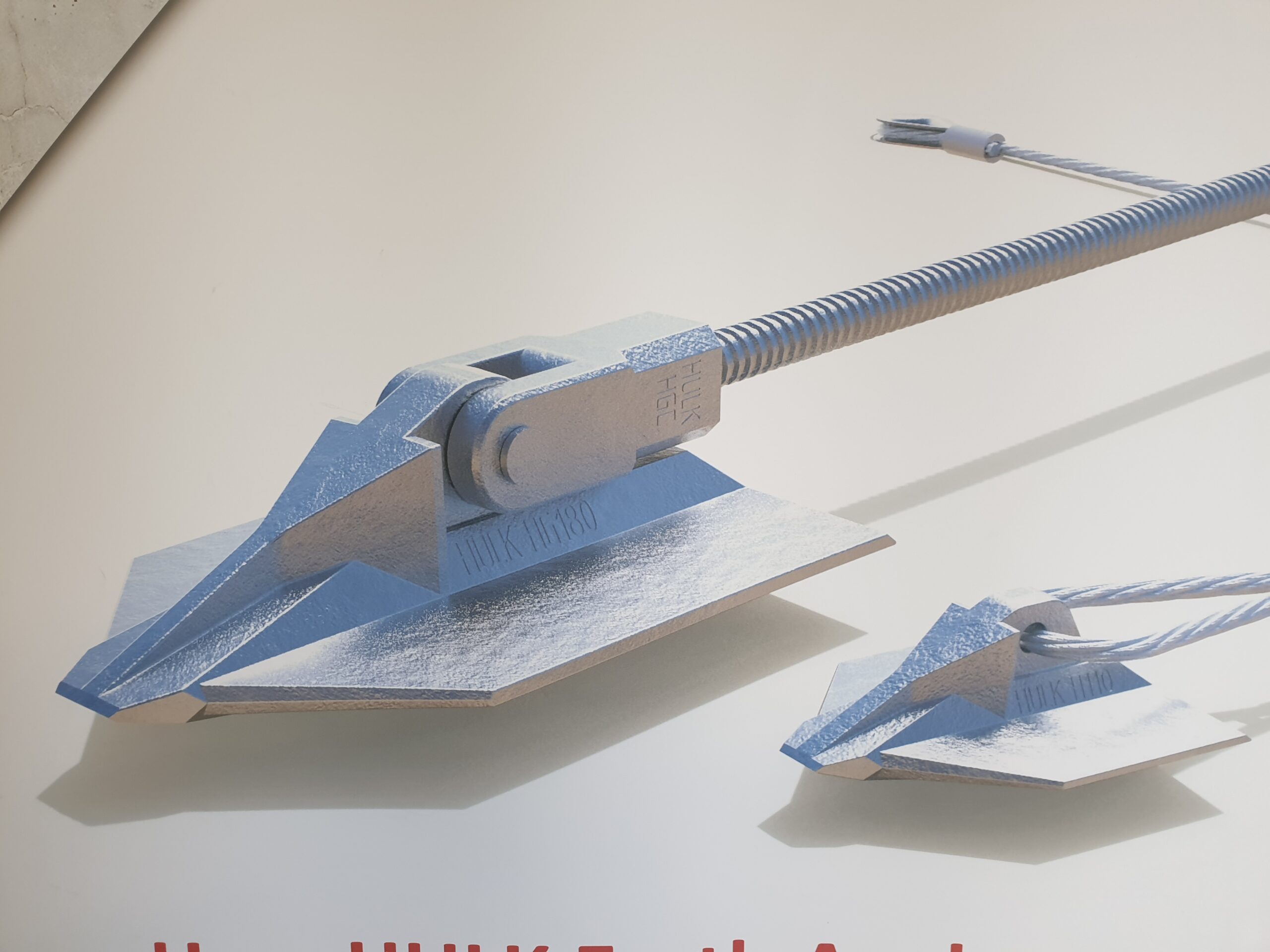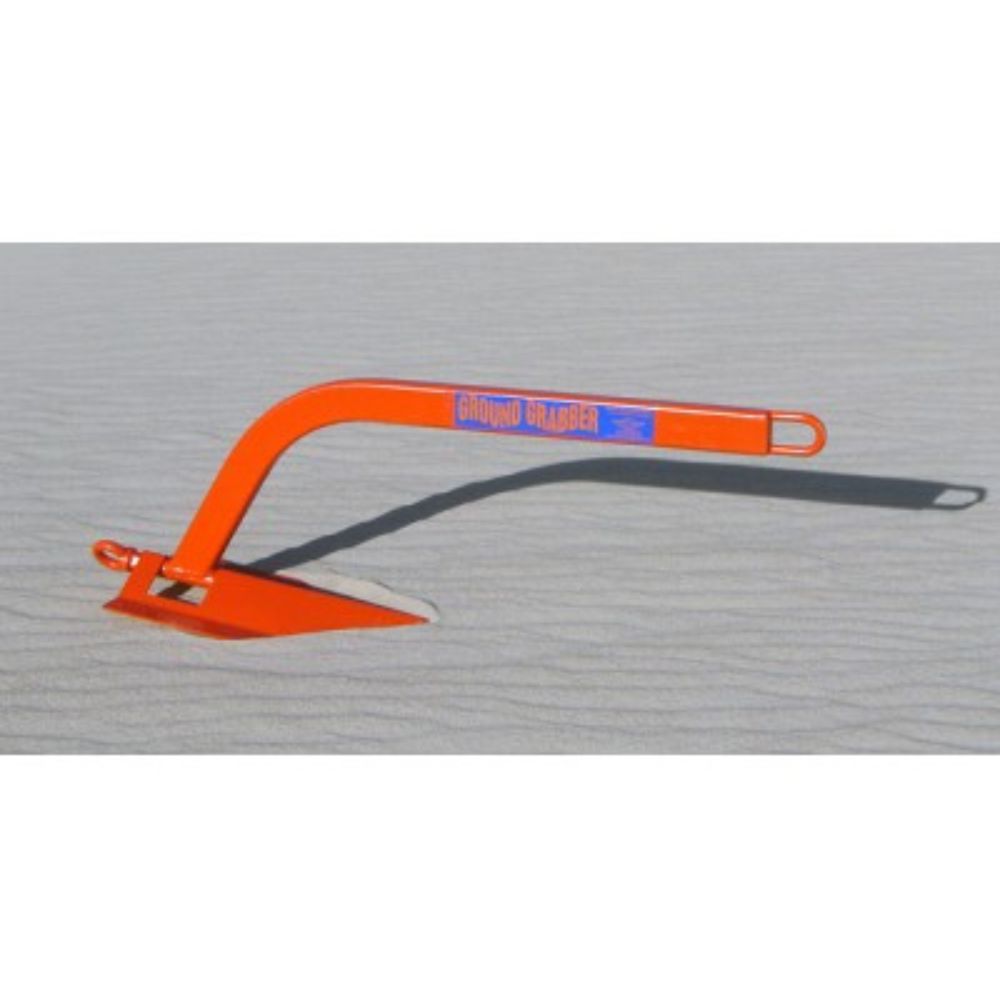Just How Durable Earth Anchors Work: A Comprehensive Guide to Dirt Anchoring Solutions
Durable Earth anchors play an important role in providing security and assistance in numerous building applications. By embedding deeply into the ground, they resist upright and lateral pressures successfully. Different kinds of anchors accommodate various dirt conditions, making them versatile. Understanding their technicians and setup techniques is essential for optimizing performance. What variables influence their performance, and exactly how do they contrast to standard approaches? The responses might amaze you.
Recognizing Heavy-Duty Earth Anchors
Sturdy Earth anchors work as important parts in various building and construction and landscaping tasks, providing security and assistance in challenging dirt problems. These anchors work by being embedded into the ground, where they stand up to upright and side forces. Their design permits secure accessory to structures, ensuring they continue to be anchored against dirt movement or outside loads.The effectiveness of durable Earth anchors greatly depends on the type of dirt and the support's installment deepness. Correct setup methods are crucial, as they establish the support's holding ability. Ecological factors, such as moisture and freeze-thaw cycles, can likewise affect performance.These anchors are often utilized in applications varying from safeguarding fencings and maintaining wall surfaces to maintaining temporary structures during adverse weather condition problems. Recognizing the concepts behind sturdy Earth supports is crucial for specialists looking for to boost the durability and safety of their projects.
Kinds of Heavy-Duty Earth Anchors
Various types of heavy-duty Earth anchors are designed to meet specific requirements based upon dirt conditions and project demands. Helical anchors, featuring screw-like blades, are efficient in softer soils, using high lots capabilities and simple setup. Driven anchors, which are hammered into the ground, are ideal for rocky surfaces and offer immediate lots support. Tie-back anchors are generally utilized in keeping wall surface applications, allowing for side support by securing right into the ground at an angle. Another kind is the cast-in-place anchor, perfect for concrete applications, as they are integrated right into structures for enhanced security. Soil screw anchors are functional choices that can be made use of in different dirt types, giving dependable stress and compression capabilities. Each kind offers distinct applications, making sure stability and safety in building and landscape design jobs. Understanding these choices permits informed choices in picking the suitable Earth securing solution.
The Mechanics of Soil Anchoring

Comprehending the technicians of soil anchoring requires an assessment of different kinds of Earth supports and their installment techniques. Each anchor type provides special qualities that affect its performance in different soil conditions. Appropriate setup approaches are essential for maximizing the anchoring system's stability and performance.
Kinds Of Earth Anchors
Earth anchors, vital elements in dirt anchoring systems, can be found in several types, each created for details applications and dirt problems. One of the most typical types include screw anchors, which are twisted right into the ground, giving solid side resistance. Helical supports feature blades that allow for efficient installation in numerous dirt types, making them appropriate for both momentary and long-term applications. Driven anchors, generally made from steel, are inculcated the soil and work in thick or rough atmospheres. Auger anchors use a helical style to assist in setup in softer dirts. Ultimately, plate supports consist of a level plate hidden horizontally, distributing lots over a bigger area, perfect for applications needing high load abilities in cohesive dirts.
Installment Methods Discussed
Correct setup techniques are crucial for the effectiveness of dirt anchoring systems. The process generally starts with website assessment, validating the selected place can support the anchor's lots. After establishing the right anchor type, correct hole deepness and angle should be developed. The installation includes driving the support into the ground making use of specialized devices, such as hydraulic or hands-on motorists, to accomplish ideal embedment. Post-installation, tensioning the anchor is important to guarantee stability; this is commonly validated with load testing. In addition, bordering soil conditions must be monitored to stop variation. Adhering to these techniques not only improves the support's efficiency but likewise extends its life-span, providing reputable assistance for numerous applications.
Applications of Heavy-Duty Earth Anchors
While sturdy Earth supports are often related to building and landscaping, their adaptability encompasses a range of applications throughout various markets. In civil engineering, they supply crucial assistance for preserving wall surfaces, making certain security in locations susceptible to soil erosion. The marine sector makes use of these supports for safeguarding docks and marinas, avoiding movement caused by currents and tides. In addition, in the telecom sector, sturdy Earth anchors are significant for stabilizing cell towers and various other high structures versus wind pressures. Agricultural applications also profit, as these supports can protect structures like greenhouses and livestock secure fencing, ensuring they endure harsh weather. Furthermore, in renewable resource projects, such as wind ranches, Earth anchors play an essential role in safeguarding wind turbine foundations, boosting overall safety and efficiency. This wide variety of applications highlights the flexibility and dependability of sturdy Earth anchors throughout different areas.
Advantages Over Typical Anchoring Methods
Typical anchoring methods have actually long been depended upon for security, heavy-duty Earth anchors provide considerable benefits that address enhance performance and effectiveness. One significant advantage is their superior load-bearing capacity, which enables them to hold up against higher pressures without failing. This toughness makes them optimal for requiring applications, such as in building and construction and utility installations.Additionally, heavy-duty Earth anchors are developed for deeper setup, supplying higher security in different dirt problems, consisting of sandy or loose soils. Their resistance to rust and environmental elements ensures a longer lifespan and reduced maintenance costs compared to conventional methods.Moreover, these supports can be mounted with marginal disruption to the surrounding location, protecting the stability of the landscape. Generally, durable Earth anchors present a dependable and effective solution for securing demands, going beyond the restrictions typically related to traditional anchoring techniques.
Installment Process and Best Practices
The installment process for soil securing options begins with comprehensive preparation and website evaluation to assure peak efficiency. Following this, a step-by-step installment guide provides clear guidelines for efficient implementation (heavy-duty earth anchors). Abiding by these finest techniques is crucial for accomplishing trustworthy and resilient anchoring results
Prep Work and Site Assessment
Reliable preparation and comprehensive site analysis are crucial steps in the setup of dirt anchoring remedies. Prior to installment, the dirt type have to be evaluated to establish its bearing capability and viability for anchoring. Carrying out a geotechnical study can offer vital info concerning soil structure, moisture levels, and prospective ground movement. Furthermore, recognizing existing structures, greenery, and utilities is vital to stay clear of disturbance during setup. The area must be cleared of particles and obstacles to guarantee risk-free gain access to for tools. Weather conditions ought to likewise be checked, as adverse conditions can affect both safety and installation efficacy. By carefully preparing the site and examining all appropriate aspects, the chance of effective support efficiency is significantly boosted.
Step-by-Step Setup Guide
A detailed installment procedure is crucial for accomplishing optimal performance of soil securing remedies. The setup begins with selecting the appropriate anchor kind and ensuring the site is clear of particles. Next off, appropriate hole placement is determined based upon lots needs. When the location is developed, openings are drilled to the defined depth and diameter using the correct devices. The anchor is after that placed into the opening, seeing to it it is aligned appropriately. After securing the support, soil is backfilled and compacted to boost stability. It is essential to adhere to producer standards throughout the process. A post-installation evaluation validates that the anchors are appropriately positioned and functioning as meant, giving reputable assistance for the intended application.

Maintenance and Examination of Earth Anchors
Routine maintenance and inspection of Earth supports are vital for guaranteeing long-term efficiency and stability. Routine Resources checks permit the early discovery of issues such as deterioration, loosening, or dirt motion. Assessors must search for indicators of rust or destruction on the anchor components, particularly at the connection points. Furthermore, the surrounding dirt ought to be analyzed for erosion or modifications in moisture material, which can influence anchor effectiveness.It is suggested to establish a regular inspection routine, preferably at least when a year, depending on environmental problems. Throughout evaluations, all noticeable parts ought to be cleansed to remove dirt or particles that could conceal possible issues. Any kind of signs of distress, such as tilting frameworks or uncommon settling, should trigger immediate analysis. Appropriate documents of inspections can help in monitoring support performance with time and assist in prompt upkeep actions, making sure the anchors stay functional and trustworthy.
Regularly Asked Questions
What Materials Are Heavy-Duty Earth Anchors Normally Made From?
Durable Earth anchors are typically created from long lasting materials such as galvanized steel or stainless steel, making certain stamina and resistance to corrosion. These materials offer long-lasting assistance and stability in different soil conditions and applications.
How Do Dirt Problems Influence Anchor Efficiency?
Soil problems greatly affect support performance. Variables such as soil type, dampness content, and compaction influence the anchor's hold and security, with cohesive soils often supplying far better resistance than loose or sandy dirts, impacting general performance.
Can Heavy-Duty Earth Anchors Be Reused After Removal?
Sturdy Earth supports can be reused after removal, supplied they are inspected for damage and wear. Appropriate cleansing and maintenance improve their longevity, guaranteeing effective performance in subsequent setups when problems permit for safe reinstallation.
What Are the Environmental Effects of Making Use Of Earth Anchors?
The ecological influences of using Earth anchors include prospective soil disturbance, interruption of regional ecosystems, and possible contamination of groundwater. If used responsibly, their benefits frequently outweigh these issues, promoting stability in numerous applications.
Exactly how Do I Select the Right Anchor for My Project?

Comments on “The Role of tensile load anchors in Mitigating Foundation Shift and Soil Erosion”